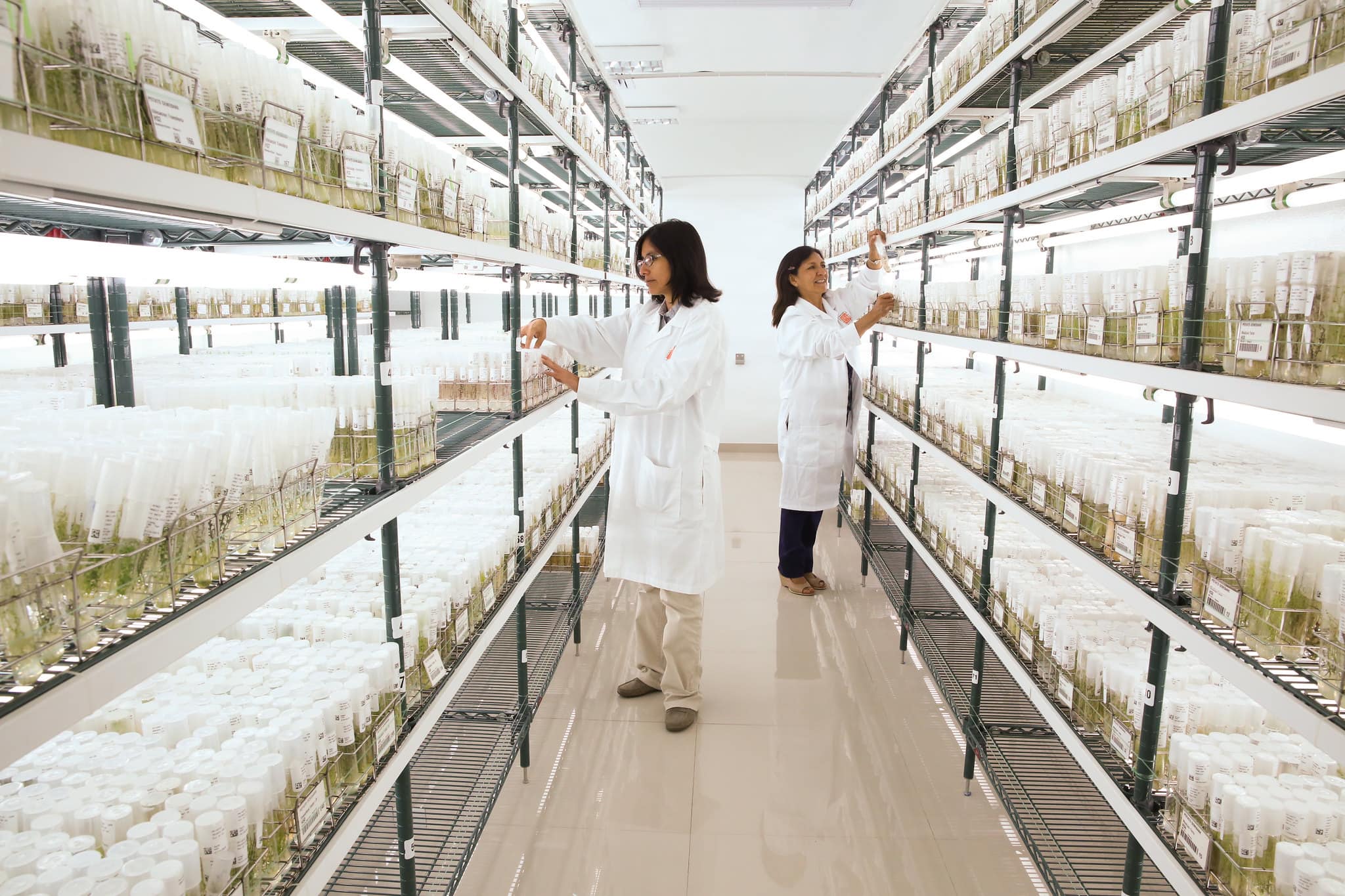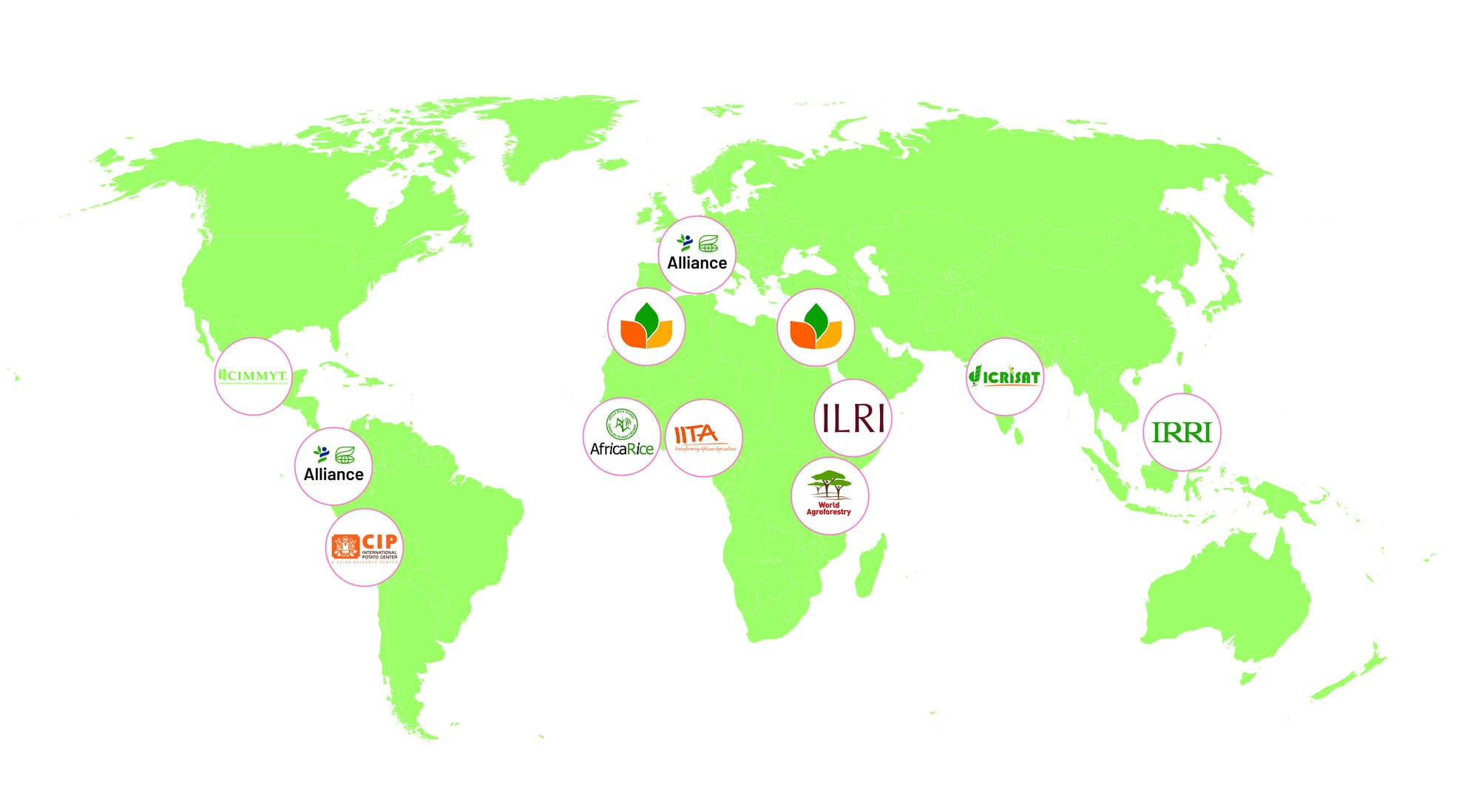
A report recently released by CGIAR’s evaluation function (IAES) has commended the Genebank Platform as an example of systemwide cooperation. Evaluators noted the genebanks’ use of cutting-edge science and the development of strong policy and germplasm health functions. They called for ongoing, reliable funding for the initiative. Other recommendations included accelerating work on data curation and expanding outreach to a wider range of users.
The evaluation aimed to assess the effectiveness of the Genebank Platform which coordinated CGIAR’s 11 genebanks and germplasm health units (GHUs) from 2017 to 2021. The Platform was managed by the Crop Trust.
This thorough evaluation drew insights from 115 structured interviews, five component studies, two genebank visits and a survey of 186 staff, partners and funders. The recommendations aim to inform the work of the CGIAR Genebanks Initiative which has overseen activities since 2021.
The evaluation highlighted the positive results of collaboration between the CGIAR centers that manage the genebanks and GHUs. The Platform was like a ‘prototype for One CGIAR’ and a model of collegiate action and knowledge exchange. This was particularly evident in the development of eight Communities of Practice (CoPs) with wide-ranging benefits in diverse thematic areas from seed quality management to managing international policy.
“A standout revelation was the existence of a community of practice within and between the centers and genebanks. This collaborative framework serves as a hub for shared learning and the evolution of techniques, emerging as a pivotal element of the platform’s success.”
Dr David Coombs, evaluation co-lead.
The report also noted how the genebanks use cutting-edge science to improve both efficiency and the collections’ value to users. That includes the development of cryopreservation techniques, high-throughput virus screening and sub-setting tools. The evaluators underlined the high quality of service provided by the GHUs and concluded that the policy team offered an authoritative and global perspective.
“The Platform demonstrated the value of financing the genebanks over and above the costs of routine or essential operations. Genebanks are not static repositories or seeds museums but rather Centers of Excellence for scientific progress that will enhance their contribution to the Sustainable Development Goals (SDGs).”
Evaluation Report: Lessons Learned.
The results of the survey of internal and external stakeholders echoed the evaluation team’s endorsement of the Platform’s activities and achievements. Over 80% agreed that its work on conservation, use and capacity-building was successful. There was particularly strong recognition of the GHUs’ work in germplasm health testing (93% positive) and capacity building (94%). A small proportion of users wished for a faster service with more data and quantity of seed. Some respondents also called for more engagement with both CGIAR breeders and a wider range of external users.
The CGIAR Management Response to the evaluation acknowledged these concerns and committed to incorporate the recommendations into its planning for the next phase of activity for 2025-2030. Many of the proposals are already reflected in the existing priorities of the Genebanks Initiative. That includes work to enhance genebank data quality and curation, to expand outreach to a wide range of users and to collaborate with breeders to evaluate high-potential material.

The evaluators recommended that “funders and CGIAR should ensure adequate and reliable funding” not only for routine operations and infrastructure, but also to improve efficiency and evaluation of the collections. They also highlighted the importance of a coordinated approach with the Crop Trust on common goals like fundraising, communications and support for non-CGIAR genebanks.
“CGIAR should continue to recognize the importance of CGIAR genebanks and the responsibility and obligations that CGIAR carries in respect of the ITPGRFA [Plant Treaty] and for the future of biodiversity on earth; and to fully support genebanks.”
Evaluation Report – Recommendations.
Overall, the evaluation found that the CGIAR genebanks have been successfully evolving to meet users’ needs. The period under review included both the Covid pandemic and the retirement of several long-standing genebank managers. While these challenges certainly had an impact – notably on the distribution of materials – the genebanks emerged from that period more secure and integrated. This was in large part due to the legacy of more than ten years’ work to develop stronger collaboration and closer coordination.
Header photo: CIP genebank, credit: Luis Salazar/CropTrust
